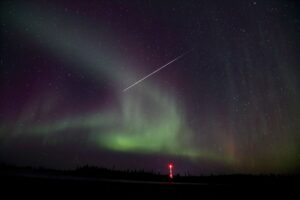Sweden
Facts & Figures
AC member since 1996
Active Polar Icebreakers
5
Coordinates
Stockholm: 59.3294° N, 18.0686° E
Kiruna: 67.8558° N, 20.2253° E
Population
Sweden: 10.158,223 (31.12.2019)
Norrland: 1.185,483 (31.12.2019)
Land Area
Sweden: 449,964 km²
Norrland: 261,292 km²
- Environment
- People
- Economy
- Arctic Policy
- Recent Publications
- Links
- Experts
Stockholm, Sweden’s largest city and the capital, has a population of 2 371 774 million. Most big cities, including Stockholm, Gothenburg, Uppsala and Malmö are situated in the south of the country. Although it is sparsely populated, approximately 15% of the total land area is situated north of the Arctic Circle. Kiruna, the northernmost and most populated town in Sweden’s Arctic, was home to 22,906 inhabitants in December 2019. Kiruna, built on top of an iron ore mine, is in the process of moving three kilometres east by 2033 to avoid collapsing into the mine pit. While general weather conditions in northern Sweden are harsh, with average winter temperatures hovering around -10 C°, its 17 C° summer average and long hours of sunlight allow for the industrial cultivation of grains, potatoes, and grass for hay.
Sweden has positioned itself as one of the most progressive countries on environmental issues in the world. With 99% of its solid waste recycled or used to produce biogas, Sweden was the first country to establish an environmental protection agency in 1967. Despite its reputation, Sweden has surprisingly light forestry laws, and often leaves decisions about logging to timber companies. The result of such lax regulation is the loss of large swaths of biologically-rich boreal forests in the North to clear cuts that remove up to 95% of the trees, leave deep tire tracks, and are often re-planted with lodgepole pine, a species imported from North America. The Word Wildlife Fund has reported that two thousand forest-dwelling species are threatened in Sweden. Mining in Sweden’s northern county of Lapland, in particular iron ore, has also led to environmental concerns over waste materials, heavy metal leaching, water contamination, and habitat destruction.
Sweden accounts for less than 0.2% of total global emissions, and has committed to building a society with no net greenhouse gas emissions by the year 2050. Northern Sweden is home to several climate research stations monitored by the Swedish Polar Research Secretariat, including an atmosphere radar facility and field stations capable of glacier monitoring and permafrost studies. Like the rest of the Circumpolar North, Sweden’s Arctic territory is facing some of the world’s most intense temperature increases and increased precipitation. Such changes may lead to greater water flows, changes in soil conditions, and more extreme weather patterns. Sweden has made climate change research, mitigation, and adaptation top priorities in its national Arctic policy. Climate change leaves Sámi culture and industries particularly vulnerable, as they traditionally have strong links to the surrounding natural environment. Sweden’s Arctic strategy from 2011 aims to strengthen the long-term capacity of these communities and of the surrounding environment to help them adapt to a changing climate.
This page was last updated on 1 August 2022. If we have missed anything, please contact info@thearcticinstitute.org.


